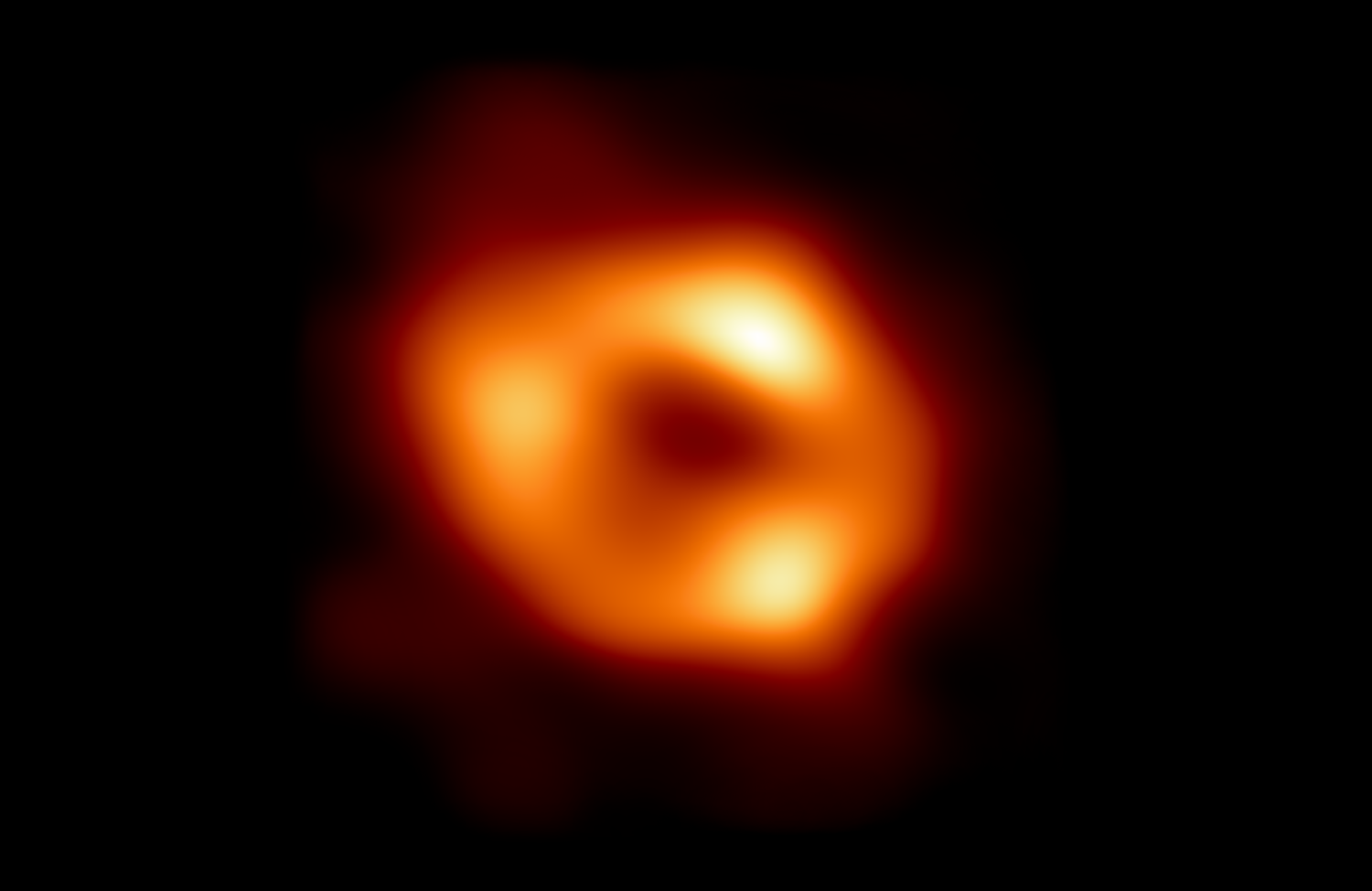The black hole at the center of our Galaxy imaged for the first time
The Event Horizon Telescope network has captured the second-ever direct image of a black hole — called Sagittarius A* — at the center of the Milky Way.
It wasn’t long ago that the idea of capturing an image of a black hole sounded like a joke or an oxymoron. How do you take a picture of something so dense that it absorbs the very light around it?
But three years ago, we got our first good look with help from the Event Horizon Telescope, which is multiple radio telescopes all linked together. That picture was a slightly blurry, red-and-orange doughnut—the best picture to date of the supermassive black hole at the center of a galaxy called Messier 87, which is called Messier 87* or M87*. (Black holes are given an asterisk after the name of their location). Today, it’s possible to buy jewelry and t-shirts with that picture, drink out of a M87*-adorned coffee cup, or just make it your phone background. Now that the first picture of a black hole is practically a pop culture meme, how do you one-up that? In the past weeks, the Event Horizon Telescope team alluded to a new ‘breakthrough’ hiding in the Milky Way.
On Thursday, the team unveiled that breakthrough: the first image of our nearest black hole neighbor in the heart of our galaxy. This is the first image of Sagittarius A* (or Sgr A* for short), the supermassive black hole at the center of our galaxy. Captured by the Event Horizon Telescope array, it’s the first direct visual evidence of the presence of this black hole. Credit: EHT Collaboration
This is the first image of Sagittarius A* (or Sgr A* for short), the supermassive black hole at the center of our galaxy. Captured by the Event Horizon Telescope array, it’s the first direct visual evidence of the presence of this black hole. Credit: EHT Collaboration
This colossal resident of the Milky Way, known as Sagittarius A*, resides 26,000 light-years away from Earth. Astrophysicists have long observed plumes of gas and X-ray radiation that suggested a supermassive black hole lingered at the center of the galaxy. Nobel prize winnings, looking at the orbits of nearby stars, calculated its mass would be 400 million times that of the sun.
But now, we can finally see it. As described in press conferences Thursday morning, the research team used a network of radio telescopes to capture the footprint of Sagittarius A*. What was unveiled in the image matched what the laws of Albert Einstein’s theory of general relativity would predict: a bright ring surrounding a dark shadow—that silhouette being the light-sucking point of no return, the event horizon.
With this picture and data in hand, scientists are now unpacking how our neighborhood black hole compares to the one already imaged. The Event Horizon Telescope team has already noted some striking differences.
This is another big achievement and a big step in cosmology.






































